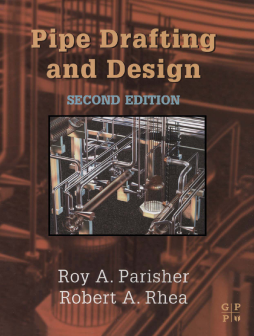
Additional Information
Book Details
Abstract
Pipe designers and drafters provide thousands of piping drawings used in the layout of industrial and other facilities. The layouts must comply with safety codes, government standards, client specifications, budget, and start-up date. Pipe Drafting and Design, Second Edition provides step-by-step instructions to walk pipe designers and drafters and students in Engineering Design Graphics and Engineering Technology through the creation of piping arrangement and isometric drawings using symbols for fittings, flanges, valves, and mechanical equipment. The book is appropriate primarily for pipe design in the petrochemical industry.
More than 350 illustrations and photographs provide examples and visual instructions. A unique feature is the systematic arrangement of drawings that begins with the layout of the structural foundations of a facility and continues through to the development of a 3-D model. Advanced chapters discuss the customization of AutoCAD, AutoLISP and details on the use of third-party software to create 3-D models from which elevation, section and isometric drawings are extracted including bills of material.
Covers drafting and design fundamentals to detailed advice on the development of piping drawings using manual and AutoCAD techniques
3-D model images provide an uncommon opportunity to visualize an entire piping facility
Each chapter includes exercises and questions designed for review and practice
Review of first edition:
...presents a solid foundation in the basics of industrial drafting and design. (Computer-Aided Engineering)
Review of second edition:
The present format is very simple and logically arranged. Such has not been the case with most pipe drafting books of the past. (Hubert E. Belisle, Louisiana State University)
...this book provides step-by-step instructions to walk pipe designers and drafters, as well as students in engineering design graphics and engineering technology, through the creating of piping arrangement and isometric drawings using symbols for fittings, flanges, valves and mechanical equipment. Over 350 illustrations and photographs provide examples and visual instructions. Drawing are systematically arranged, beginning with the layout of the structural foundations of a facility, through to the development of a 3D model. Advanced chapters discuss the customization of AutoCAD and AutoLISP, and detail the use of third-party software to create 3D models from which elevation, section and isometric drawings are extracted, including bills of material. -Petroleum Review, August 2002
